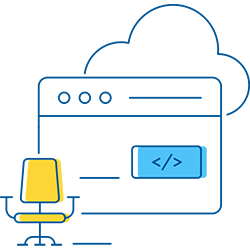


The RFID technology has advanced further in terms of technology maturity and standardization, cost reduction and successful deployment experiences over the past few years. Radio Frequency Identification (RFID) is the wireless service used to transfer data with radiofrequency waves. Items tagged with RFID tags give access to users to automatically and uniquely identify and track inventory and assets. RFID takes auto-ID technology for the further level by allowing tags to be read without a line of sight and depends on the type of RFID, having a read range between centimetres to over 20+ meters. RFID has arrived after long from its first application of identifying aeroplanes as friends or foes in World War II. Not only the technology improve year over year, but the cost of implementing and using an RFID system continues to decrease, making RFID more cost-effective and efficient.

RFID is the latest technology to be used in library or records systems. Unlike RF (Radio Frequency) systems and EM (Electro-Mechanical) which have been used for decades, RFID-based systems go beyond security by combining with more faster and efficient tracking of materials throughout including easier and faster charges and discharge, inventorying, and materials handling. RFID is a combination of microchip technology and radio-frequency-based technology. The chips used in RFID systems can replace both RF or EM theft detection barcodes and targets.
You can reduce the amount of time required to do circulation operations with the use of RFID. The most vital time savings are that information can be gained from RFID tags faster from barcodes and several items in the pipeline can be read at the same time. Your system will become comprehensive RFID system that will combine RFID security and the tracking of materials throughout the library, or it is a hybrid system that uses EM for security and RFID for tracking but handles both simultaneously with a single piece of equipment.
There can be as much as a 50 percent increase in throughput. The time savings are less for check-out than for check-in because the time required for check-out usually is extended by social interaction with patrons.

There can be as much as a 50 per cent increase in throughput. The time savings are less for check-out than for check-in because the time required for check-out usually is extended by social interaction with patrons.